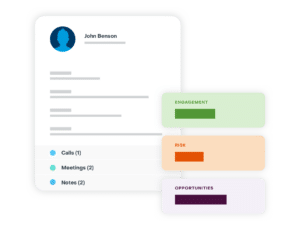The Worrying Cost of Sales and Marketing Misalignment
Having had to rethink operational strategy and seek support from digital products and services to stay afloat during the past two years, companies face another scenario—the cost of the misalignment between sales and marketing teams.
New research from SugarCRM shows that most (55%) of sales and marketing professionals cannot identify customers at the risk of leaving, with 71% suspecting customers are leaving due to poor customer service or experience.
These figures allude to yet another challenge for brands fighting an onslaught of forces, including supply chain disruption, rising energy and fuel prices, inflation, and staffing shortages.
The impact of this misalignment on customer churn now threatens the financial stability and growth of companies across all industries worldwide, and firms need to act fast. Last year, SugarCRM’s global survey research reported that customer churn cost mid-market companies an average of $5.5M per year. This year, 58% of global respondents said their customer churn rate has increased over the last 12 months.
To end this customer relationship crisis and avoid being left behind, organizations need to unite the efforts of their sales and marketing teams and deliver exceptional customer experiences.
What we'll Cover:
Breaking Down the Issue
The Sugar research reveals a key issue—63% of sales and marketing leaders agree that marketing, sales, and service misalignment prevents their organization from growing their business. The equation is simple; when sales and marketing teams work well together, the business prospers and vice versa.
Good organizational alignment is driven by several key factors, including seeing and utilizing relevant data, establishing mutual goals and metrics, and creating a seamless handoff process to improve productivity and ensure ownership. However, the research found that 45% of sales and marketing leaders experience poor communication between the teams, and 72% find that incentivizing teams with different goals causes misalignment.
[da1]
Without sales and marketing alignment, an information gap causes qualified leads to leak out the sales funnel, making the issue of customer flight even more pronounced. A quarter of sales leads generated by marketing are deemed poorly qualified, and an additional 28% of leads are considered underqualified. As if this wasn’t problematic enough, on average, 27% of sales leads go to the wayside, receiving zero follow-ups.
Add the increasing customer churn, and you are faced with a rather daunting scenario where companies struggle to fill the top of the funnel with qualified leads while losing customers at the bottom. By better scoring account opportunities, tracking conversion rates, and sharing customer preference insights, sales and marketing can synchronize their strategy for generating and acting on the most valuable leads.
Missing Data
To enable sales and marketing teams to act decisively, organizations must ensure a constant and smooth flow of data that will form the basis of real-time actionable insights. While 70% of sales and marketing professionals claim they need to do more to improve the customer perception of their organization, 56% admitted to missing data to improve marketing campaigns and sales conversions. Additionally, one in four sales respondents worldwide believes they could miss a quota due to incomplete data across the customer lifecycle.
Most modern marketing teams rely on marketing automation platforms (MAP), while sales teams handle customer relationship management (CRM). Often, this can lead to differentiated customer insights and critical information stored in separate systems. It’s no surprise that 61% of sales and marketing professionals say using different technology platforms is causing misalignment between the two business functions. By combining their systems into a single integrated CX platform, everyone benefits from quick access, real-time insights, and 360-degree views.
Software Doesn’t Meet the Needs
However, these platforms must be selected and vetted with great care. The research shows that 58% of sales and marketing leaders think their CRM system is wasting time and money, while over half (55%) say their current CRM system cannot be customized properly to meet their specific needs.
A consolidated and intuitive CRM system also allows salespeople to focus more on revenue generation and less on busy work. Salespeople spend, on average, 5 hours a week updating their CRM. It’s no wonder 61% of sales and marketing leaders agree they are frustrated with the administrative burden placed on their organization’s sales team, which is taking employees away from customer-facing activities.
Implementing technology without a thorough understanding of the needs of both sales and marketing teams and how they work most effectively will not lead to the desired alignment of sales and marketing. But with the right solution that combines both teams, removes complexity, makes life easier, and provides a unified view of data, organizations can align their sales and marketing teams to deliver exceptional customer experiences and reverse the trend.
This blog post is based on an article initially published on TechNative.





